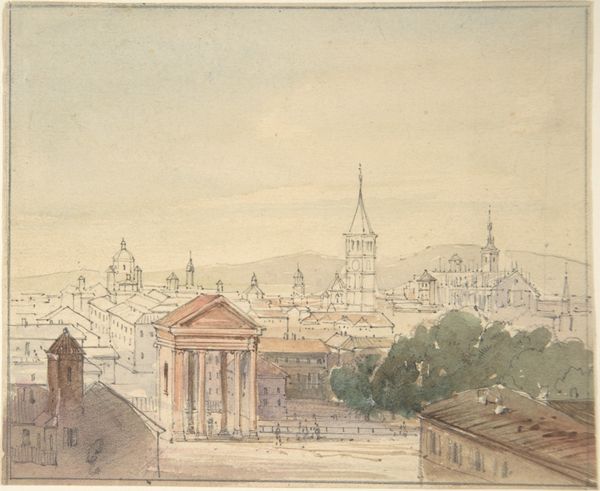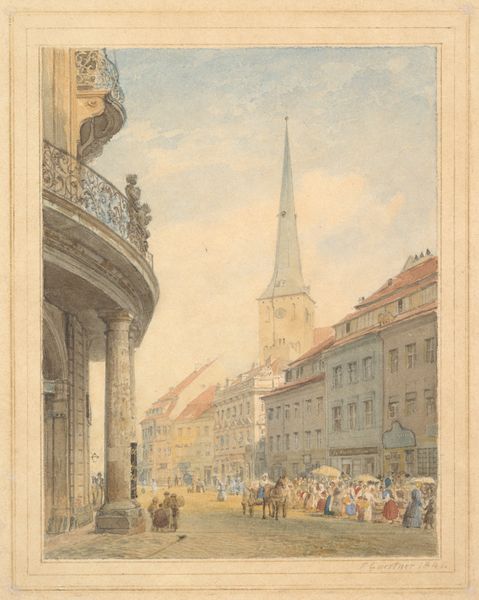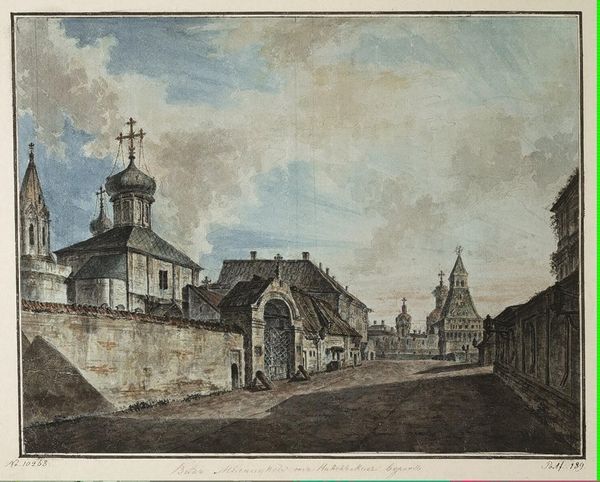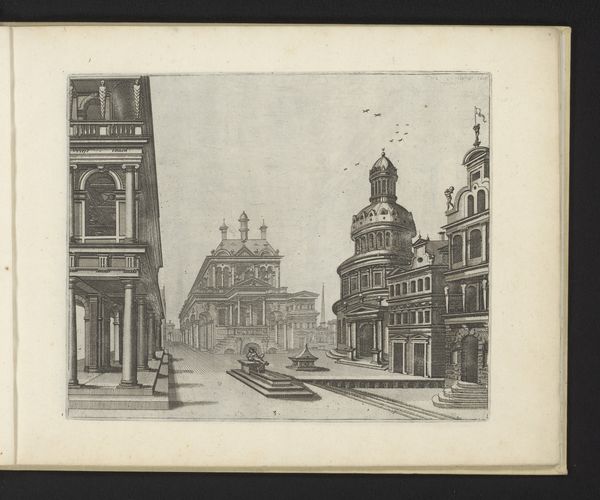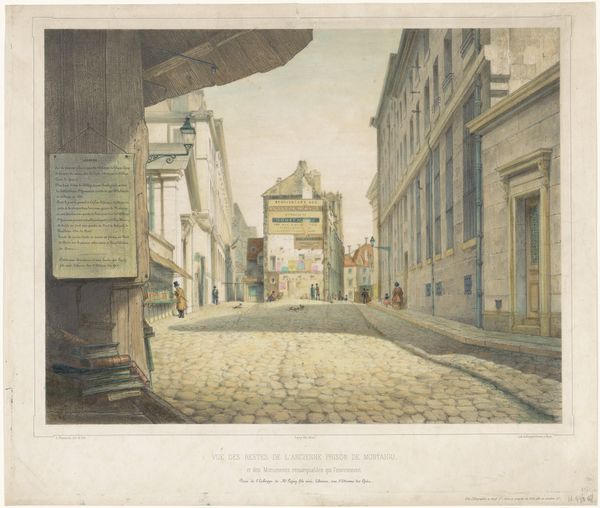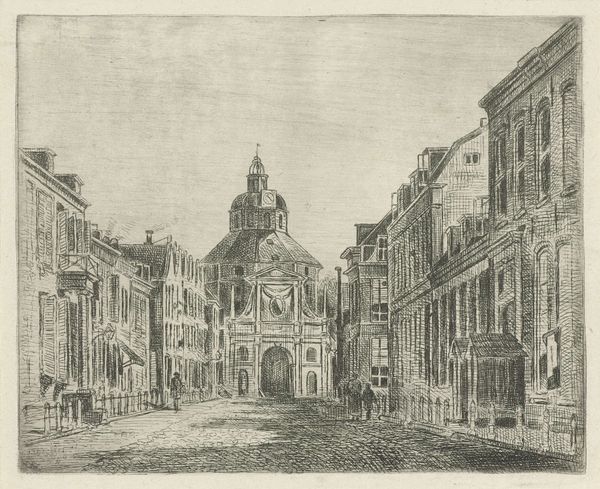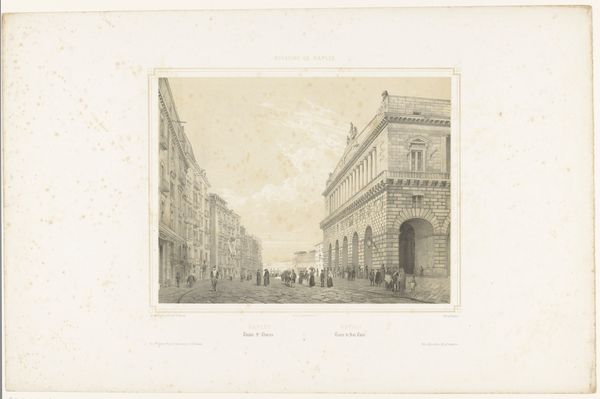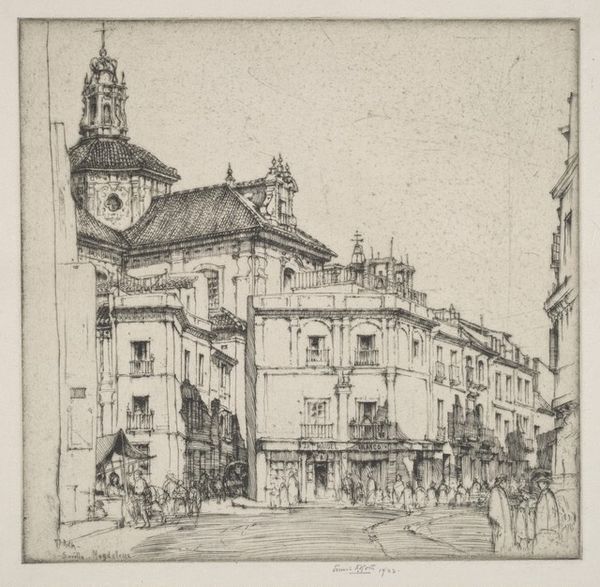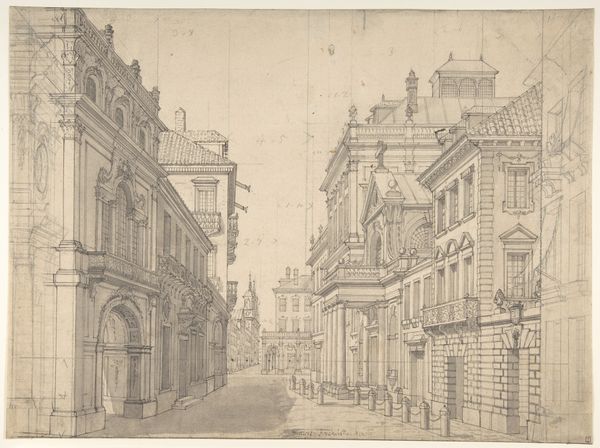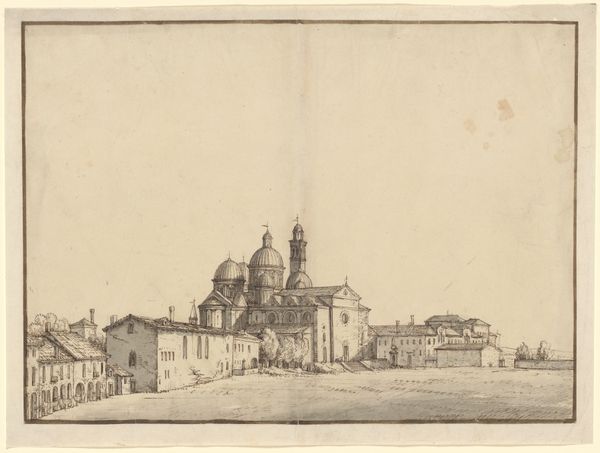
Dimensions: 8 3/8 x 10 7/8in. (21.3 x 27.6cm)
Copyright: No Copyright - United States
Curator: This watercolor and graphite drawing, titled "Baroque Church" by Gyula Háry, appears to depict a cityscape, most likely completed in the 20th century. Editor: Immediately, I notice the drawing feels both precise and dreamy. The composition guides your eye along the street, yet the soft watercolor gives the architecture an almost ethereal quality. Curator: The use of perspective is quite striking. Háry captures the essence of Baroque architecture, emphasizing its grandeur. I am also drawn to the textural contrasts between the crisp graphite lines that describe architectural elements and the softer, diffused watercolor washes defining light and shadow. Editor: From a historical perspective, urban genre-paintings like these provide insights into social life and the built environment. You can almost hear the sounds of carriages on the cobblestones and sense the rhythm of daily life in this European city. These works can operate as a window onto past urban experiences. Curator: Indeed, there’s a dialectic relationship established between the flat surface of the page and the illusionistic depth created by the composition. The color palette feels carefully restrained, mostly light and delicate ochre tones with touches of red. Note also the architectural details—the statues, the intricate window designs – each contribute to the church’s aesthetic power. Editor: And the placement of the church itself. Háry presents it not just as a building, but as the focal point of public life. It signifies spiritual and often political power, dominating the space, just as churches historically shaped the culture of so many European cities. We can see art becoming intertwined with a whole narrative of social power structures here. Curator: It is clear how he utilizes his chosen mediums of watercolor and graphite to make this commentary on architecture in a compelling structural presentation, highlighting spatial relationships that make up the composition. The architectural form then embodies the thematic concept. Editor: It offers us insight into the artist’s time and how cultural themes like class and society influence how art presents itself and the world around it. Looking at this artwork now makes me want to see other perspectives he might have visualized and documented! Curator: It’s definitely a fascinating rendering of Baroque aesthetics.
Comments
No comments
Be the first to comment and join the conversation on the ultimate creative platform.
